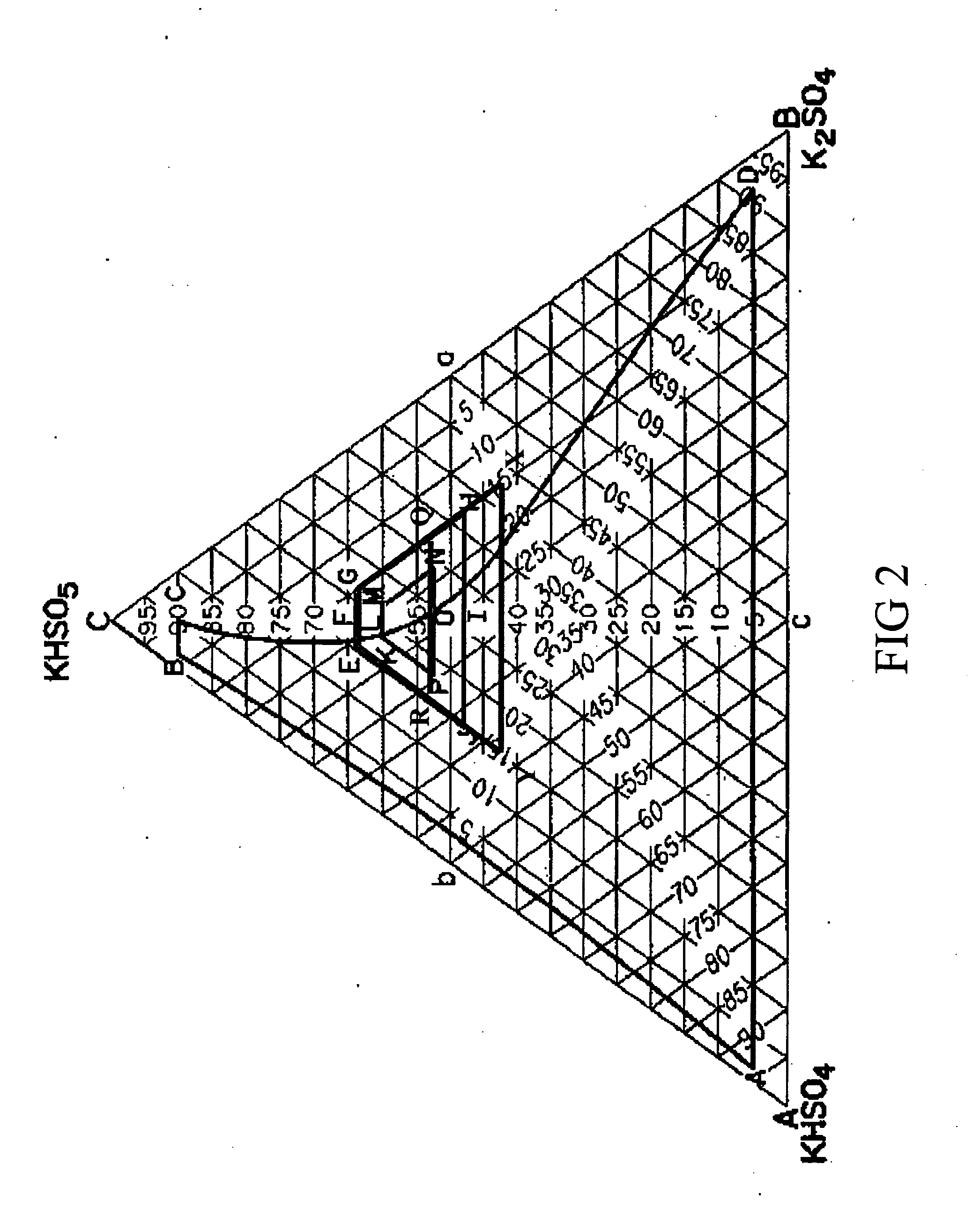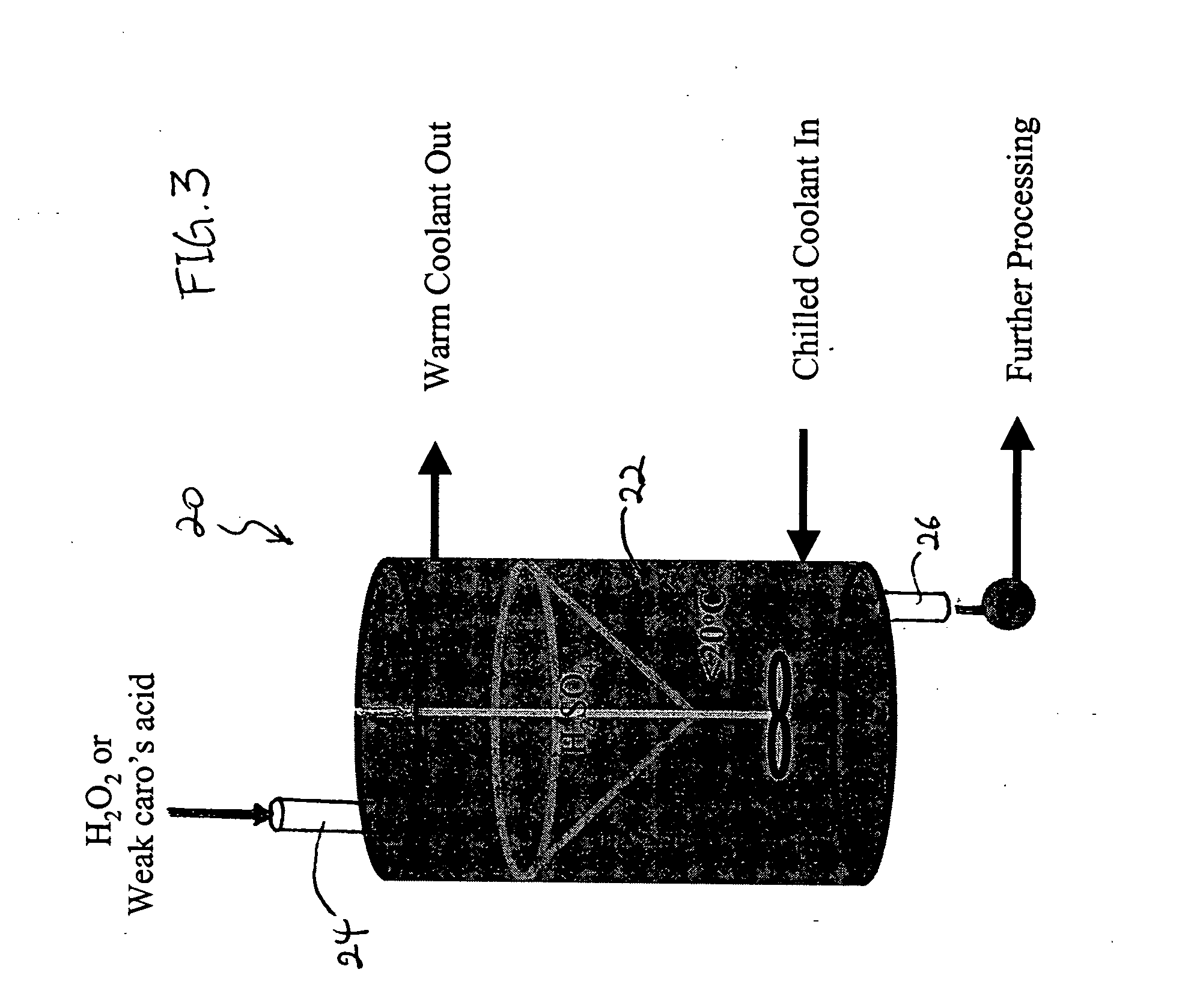Method and apparatus for producing a peroxyacid solution
a technology of peroxyacid solution and apparatus, which is applied in the direction of machines/engines, process and machine control, instruments, etc., can solve the problems of pmps's limited utility, strong oxidation potential of pmps, and use of pmps, and achieves less k2s2o8, the effect of higher active oxygen conten
- Summary
- Abstract
- Description
- Claims
- Application Information
AI Technical Summary
Benefits of technology
Problems solved by technology
Method used
Image
Examples
Embodiment Construction
)
Embodiments of the invention are described herein in the context of a swimming pool, and particularly in the context of disinfecting the swimming pool water. However, it is to be understood that the embodiments provided herein are just preferred embodiments, and the scope of the invention is not limited to the applications or the embodiments disclosed herein. For example, although Caro's acid is used as an example of a peroxyacid solution, production of other peroxyacid solutions may benefit from the invention as well.
As used herein, a “high yield” refers to a yield that is higher than what is achieved based on the established equilibrium for a given molar ratio of reactants. For example, for Caro's acid, a “high yield” would indicate a higher concentration of H2SO5 in the solution that results from a reaction between a given ratio of H2SO4 and H2O2 than what would be expected at equilibrium. As used herein, a “peroxide solution” refers to a solution of H2O2 and water. An “oxyac...
PUM
| Property | Measurement | Unit |
|---|---|---|
| temperature | aaaaa | aaaaa |
| temperature | aaaaa | aaaaa |
| molar ratio | aaaaa | aaaaa |
Abstract
Description
Claims
Application Information
 Login to View More
Login to View More - R&D
- Intellectual Property
- Life Sciences
- Materials
- Tech Scout
- Unparalleled Data Quality
- Higher Quality Content
- 60% Fewer Hallucinations
Browse by: Latest US Patents, China's latest patents, Technical Efficacy Thesaurus, Application Domain, Technology Topic, Popular Technical Reports.
© 2025 PatSnap. All rights reserved.Legal|Privacy policy|Modern Slavery Act Transparency Statement|Sitemap|About US| Contact US: help@patsnap.com



